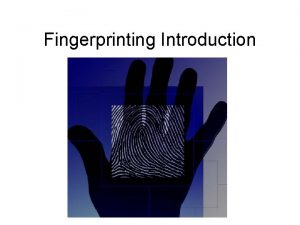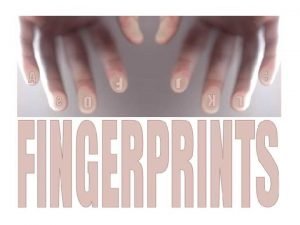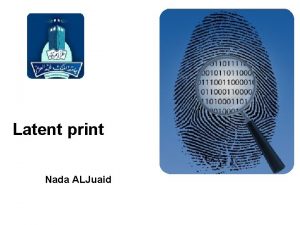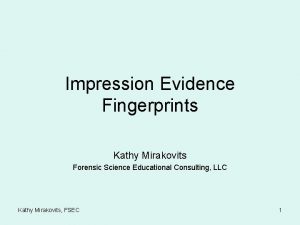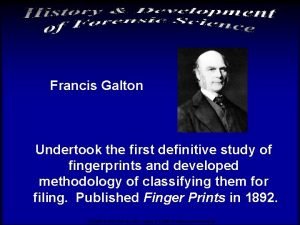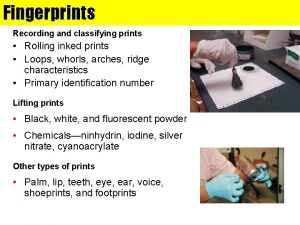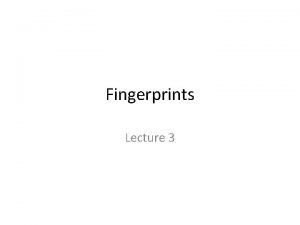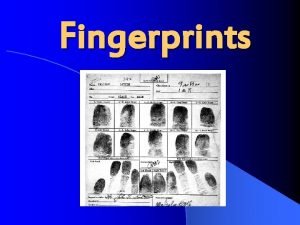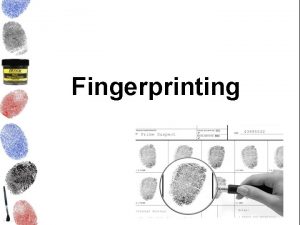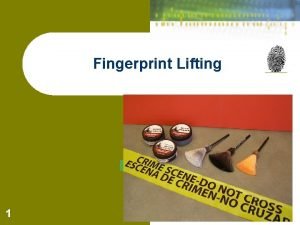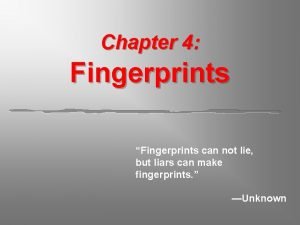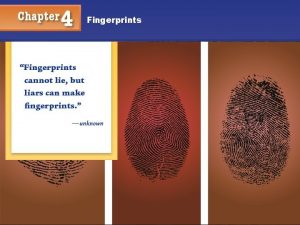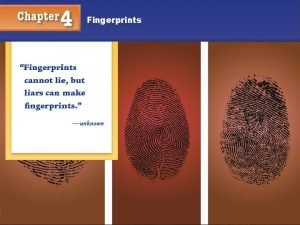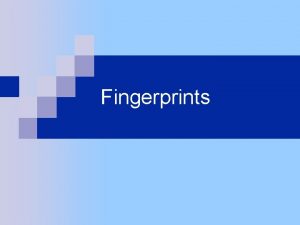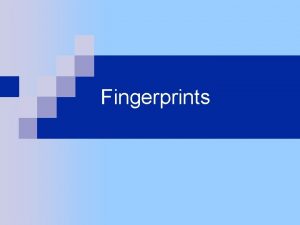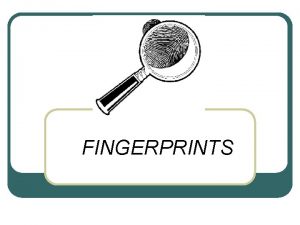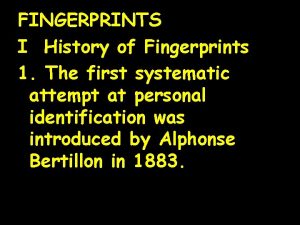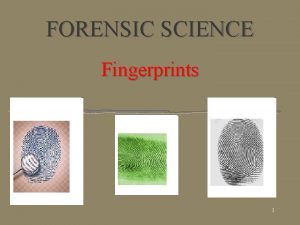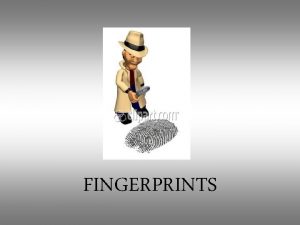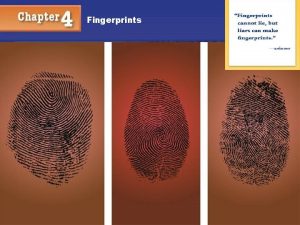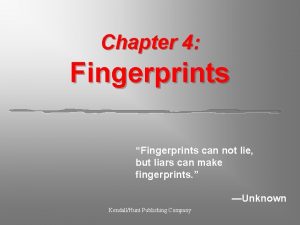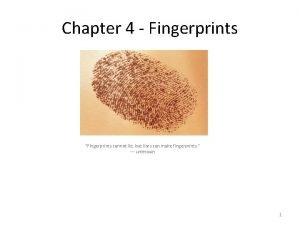Chapter 14 FINGERPRINTS History of Fingerprints HISTORY OF


















- Slides: 18

Chapter 14: FINGERPRINTS

History of Fingerprints

HISTORY OF FINGERPRINTING Chinese used fingerprints to sign legal documents as far back as three thousand years ago William Herschel, an English civil servant (India), required natives to sign contracts with an imprint of their right hand

HISTORY OF FINGERPRINTING l l The first systematic attempt at personal identification was devised and introduced by the French police expert, Alphonse Bertillon, in 1883. Bertillon’s System relied on: l Detailed description of the individual l Full length and profile photographs l Anthropometry – A system of precise body measurements

ANTHROPOMETRY l Based upon the premise that the dimensions of the human skeletal system remained fixed from age 20 until death l Eleven (11) measurements taken - to include height, width of head & length of left foot

HISTORY OF FINGERPRINTING l In 1880, Scottish physician, Henry Fauld wrote that skin ridge patterns could be important in identification work

HISTORY OF FINGERPRINTING l Fauld offered to set up a system of fingerprints at Scotland Yard (at his own expense) l Rejected in favor of the Bertillon System l This decision reversed less than two decades later

The Controversy Begins l In 1880, Fauld wrote to Charles Darwin, explained his system for classifying fingerprints and asked for Darwin’s help in developing the system l Darwin was unable to help Dr. Fauld, but forwarded the letter to his cousin Fancis Galton

The Controversy Continued l It is unclear if Fauld and Galton ever corresponded, but both developed very similar systems. l Galton received credit for the system. Fauld believed that there was a conspiracy against him and he died a very bitter man. l In 2007 a plaque acknowledging Fauld’s contribution was erected next to his grave. 9

FRANCIS GALTON l In 1892, published the classic work Finger Prints l In this book he discussed the anatomy of fingerprints and suggested methods for recording them l Proposed three pattern types: loops, whorls and arches

FRANCIS GALTON “Father of Fingerprinting l No two prints are identical l An individual’s prints remain unchanged from one year to the next

SIR EDWARD HENRY l Englishman l In 1897, proposed a 5 pattern classification system l It was adopted by Scotland Yard and is presenly used in most English speaking countries

In the United States l 1901 – First systematic use of fingerprints adopted by the New York Civil Service Commission l 1904 – American police received training in fingerprint techniques from Scotland Yards representatives l 1924 – Fingerprint records from the Bureau of Investigation and Leavenworth merged to form records for the new FBI

PHYSIOLOGY OF FINGERPRINTS

Dactyloscopy is the study of fingerprints. 15

SKIN COMPOSED OF LAYERS OF CELLS EPIDERMIS - OUTER DERMIS - INNER LAYER DERMAL PAPILLAE IN BETWEEN

Fingerprints are friction skin ridges found on the palm side of the fingers and thumbs. l These skin ridges are shaped by the dermal papillae, a boundary of cells separating the epidermis from the dermis. 17

When do the ridges form? In the womb approximately 10. 5 weeks estimated gestational age. It is thought that the movement of the fetus is what contributes to the unique ridge characteristics. 18
 First principle of fingerprints
First principle of fingerprints Chapter 6 fingerprints
Chapter 6 fingerprints Chapter 6 fingerprints
Chapter 6 fingerprints Chapter 6 fingerprints
Chapter 6 fingerprints The inner terminus of the finger print pattern.
The inner terminus of the finger print pattern. How many ridge characteristics are in a fingerprint
How many ridge characteristics are in a fingerprint Iodine fuming definition forensics
Iodine fuming definition forensics Plastic fingerprints
Plastic fingerprints Who undertook the first definitive study of fingerprints
Who undertook the first definitive study of fingerprints T. trimpe 2007 http //sciencespot.net/
T. trimpe 2007 http //sciencespot.net/ Plastic fingerprints
Plastic fingerprints Special ridge characteristics
Special ridge characteristics How are fingerprints analyzed?
How are fingerprints analyzed? Leaveridge
Leaveridge Information about fingerprints
Information about fingerprints How are fingerprints formed
How are fingerprints formed Lifting
Lifting Extended connectivity fingerprint
Extended connectivity fingerprint Edward richard henry contribution to fingerprints
Edward richard henry contribution to fingerprints
